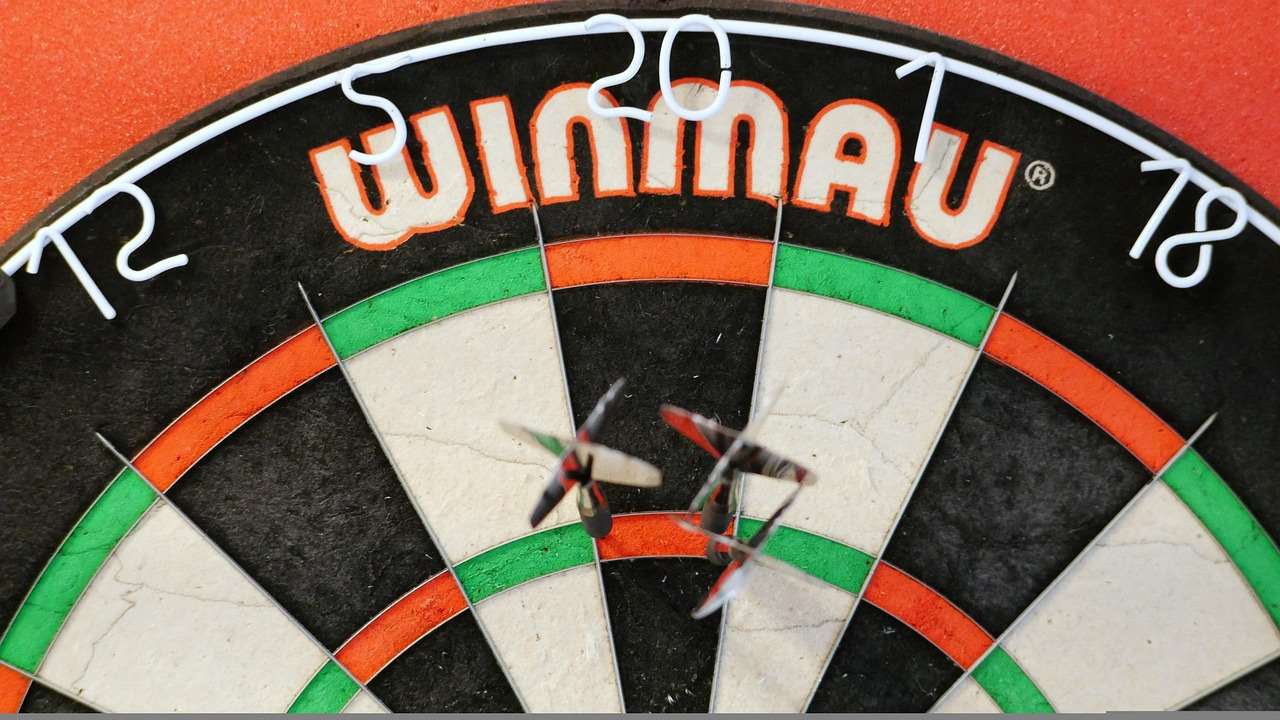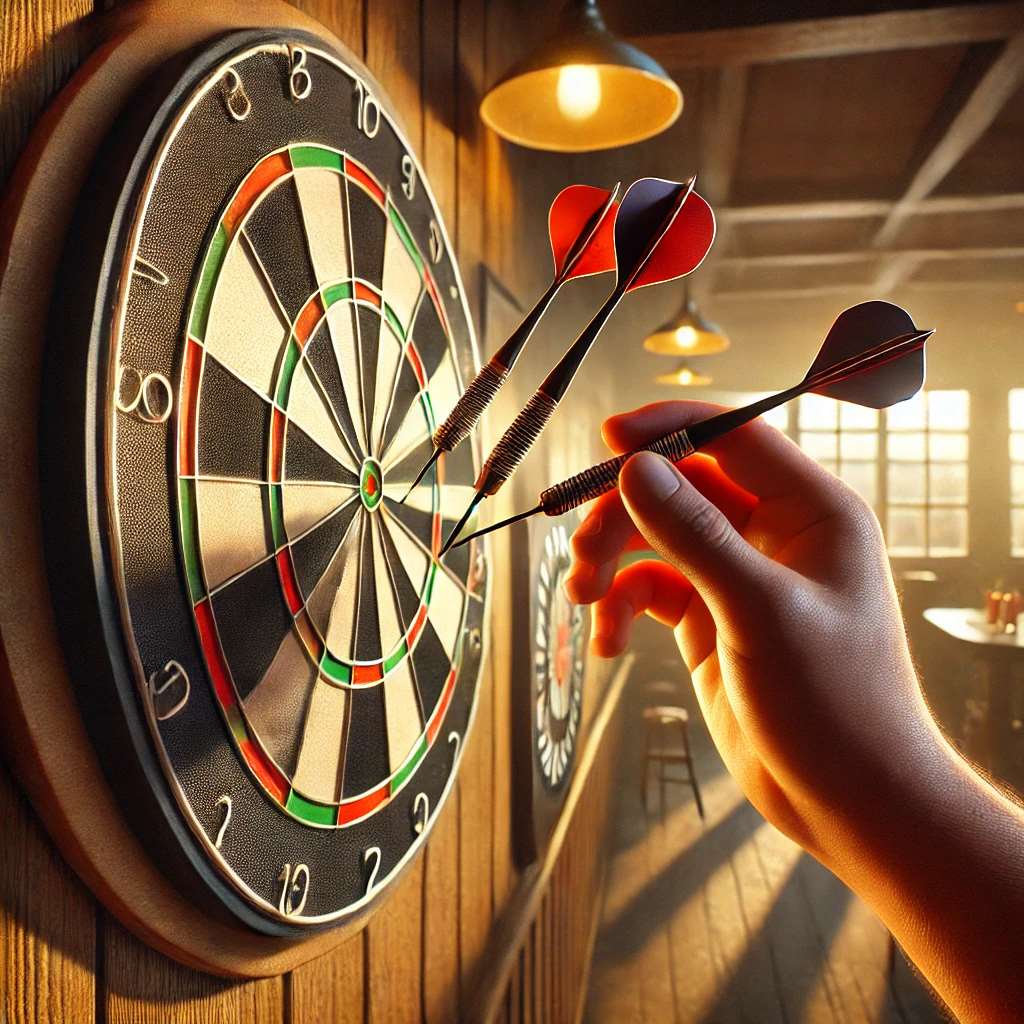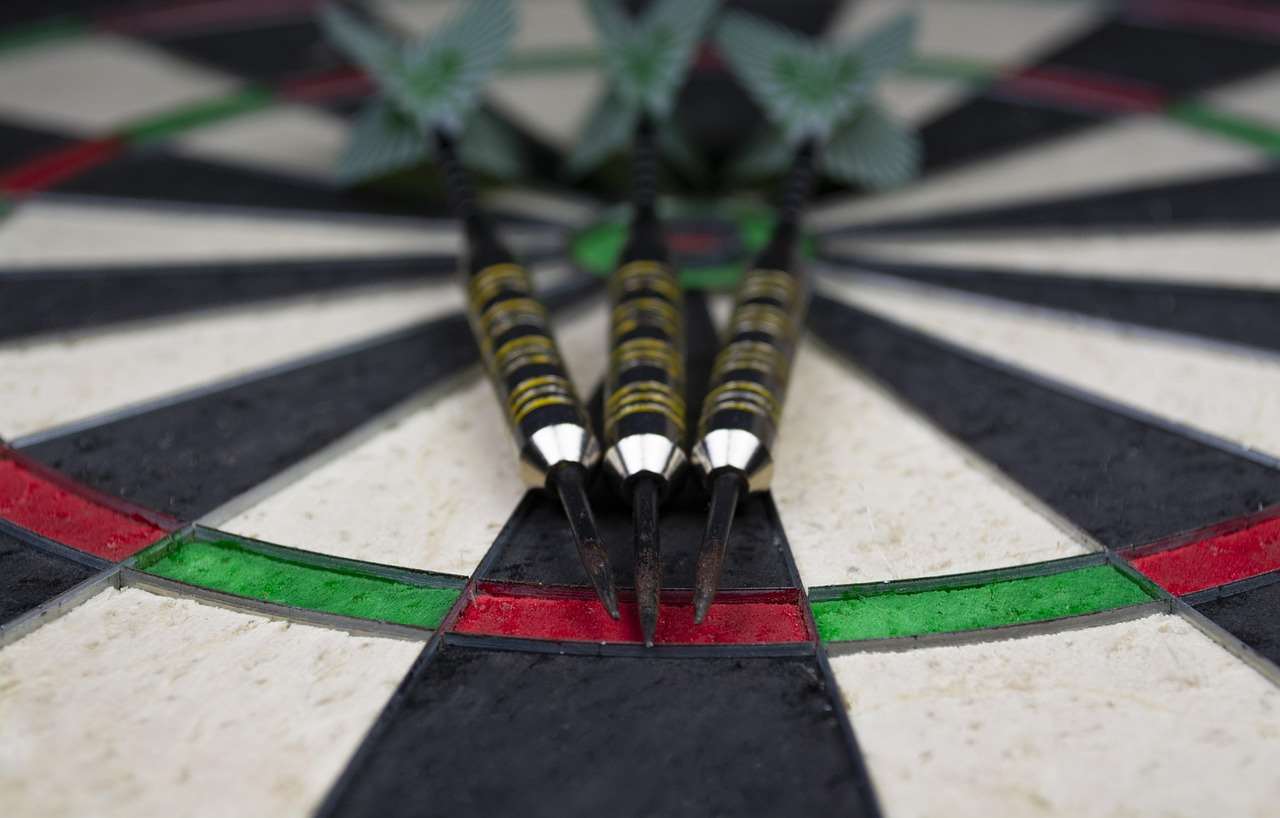Mastering the **treble alley strategic area darts** is crucial for consistent scoring and winning dart games; this area provides the highest point potential outside the bullseye. This article will break down effective strategies for targeting the treble twenty (T20) and other key treble segments, covering stance, grip, aiming techniques, and practice drills to elevate your game.
⚠️ Still Using Pen & Paper (or a Chalkboard)?! ⚠️
Step into the future! The Dart Counter App handles all the scoring, suggests checkouts, and tracks your stats automatically. It's easier than you think!
Try the Smart Dart Counter App FREE!Ready for an upgrade? Click above!
Understanding the Treble Alley in Darts
The **treble alley**, referring to the narrow ring that triples the value of the segment it borders, is the most coveted target for serious dart players. The ability to consistently hit this region, particularly the treble twenty (T20), significantly increases your scoring potential. Understanding its dimensions and the visual cues it provides is paramount. This requires focused practice and a consistent approach to your throw. Different dartboard brands may have slightly different measurements, but the strategy remains the same: precision is key.

Why the T20 is King
The treble twenty (T20) is strategically important due to the immediate 60 points it awards. This maximizes your score per dart and allows for quicker finishes in games like 501. Many players will focus almost entirely on this segment, especially in the opening rounds, as consistent T20 hits quickly deplete the score needed to win. Knowing Basic Darts Fundamentals for Beginners helps to solidify this tactic.
Optimizing Your Stance for Treble Alley Accuracy
Your stance is the foundation of a successful dart throw. A stable and consistent stance minimizes movement during your throw, leading to greater accuracy. There are several stance options, but the most common are the side-on stance and the open stance.
- Side-on Stance: This stance positions your body perpendicular to the dartboard. One foot is placed in front of the other, aligned with the throwing line. This stance minimizes body sway and provides a stable base.
- Open Stance: This stance involves angling your body slightly towards the board. Some players find this more comfortable as it allows for a clearer view of the target.
Experiment with both stances to determine which one feels more natural and allows for a more consistent and repeatable throwing motion. The key is to find a stance that feels balanced and minimizes unnecessary movement.

Mastering Your Dart Grip for Treble Alley Accuracy
The grip is another crucial element for **treble alley strategic area darts** success. It’s how you connect with the dart and control its flight path. Again, personal preference plays a significant role, but there are some general guidelines to follow. Experimentation is key.
- Consistency is Key: Regardless of the grip you choose, strive for consistency. Hold the dart the same way every time to ensure repeatable results.
- Pressure: Avoid gripping the dart too tightly. A relaxed grip allows for a smoother release. Too much pressure can introduce unwanted tension and affect accuracy.
- Number of Fingers: Most players use three or four fingers to grip the dart. Experiment to find the number that provides the best control.
Aiming Techniques for Hitting the Treble Twenty
Accurate aiming is obviously essential for hitting the treble twenty (T20) and other treble segments. There are two main aiming techniques: visual aiming and point of reference aiming.

- Visual Aiming: This involves focusing directly on the target and aligning your throw with your visual perception. This method relies on your hand-eye coordination and visual acuity.
- Point of Reference Aiming: This technique uses a specific point on the dartboard or surrounding area as a reference point. You align your throw with this reference point instead of focusing directly on the target. For example, you might aim slightly below the T20 to account for dart droop.
Some players even use a combination of both techniques. The best method is the one that yields the most consistent results for you.
Adjusting for Dart Droop
**Dart droop**, the natural arc of a dart in flight, is a critical factor to consider. To compensate, you typically need to aim slightly above your intended target, especially when throwing from a greater distance. The amount of adjustment needed depends on the weight of your darts, your throwing power, and the distance to the board. Practice and experimentation are vital for gauging the correct adjustment.
Effective Practice Drills for Treble Alley Strategic Area Darts
Consistent practice is paramount for improving your **treble alley strategic area darts** skills. Here are some effective drills you can incorporate into your practice routine:
- T20 Focus: Dedicate a specific amount of time to solely focusing on hitting the T20. Track your progress and identify areas for improvement.
- Around the Board: Start at the number one and work your way around the board, hitting each number in order. This helps improve your overall accuracy and consistency.
- Checkout Practice: Practice finishing games from various scores. This is crucial for developing your strategic thinking and improving your doubles accuracy, which often complements a strong treble game.
Remember to track your progress and identify any weaknesses in your game. Focus on improving these areas through targeted practice drills.
Related Key Areas of the Dartboard
While the T20 is frequently the primary target, proficient dart players also benefit from mastering other key segments of the dartboard to improve **treble alley strategic area darts**. Here are some of the other areas that you need to be aware of:
- The Treble 19 (T19): While not as popular as the T20, hitting a T19 is a viable alternative if you are struggling with T20s.
- The Single 20 (S20): Acceptable if you miss the treble but not ideal. Aim for consistency, not just perfection.
- The 60 point average: This means T20, T20, T20 which is the highest 3 dart score attainable outside of the bullseye.
Diversifying your target areas provides tactical flexibility and helps recover from missed shots. In some instances, players may focus on the bullseye or the double 20 depending on the score and the game.

The Mental Game: Staying Focused on the Treble Alley
Darts is as much a mental game as it is a physical one. Maintaining focus and composure, especially under pressure, is essential for consistent performance. Here are some tips for improving your mental game:
- Visualization: Visualize yourself hitting the T20 before each throw. This helps build confidence and reinforces the desired outcome.
- Positive Self-Talk: Replace negative thoughts with positive affirmations. Believe in your ability to hit the target.
- Deep Breathing: Use deep breathing techniques to calm your nerves and maintain focus.
The ability to control your emotions and stay focused on the task at hand is crucial for consistent success in darts.
Dart Equipment Considerations
The darts themselves can influence your ability to consistently hit the **treble alley strategic area darts**. Different darts will have different weights, shapes, and grip types. Experiment with various options to find darts that suit your throwing style and grip. It’s often best to adapting darts rules for beginners. Consider the following:
- Dart Weight: Choose a weight that feels comfortable and allows for a smooth and controlled throw.
- Dart Shape: Different dart shapes can affect the dart’s flight path. Experiment with different shapes to see which one works best for you.
- Grip: Choose a dart with a grip that provides sufficient control and prevents slipping.
Also, the dartboard itself matters. Ensure that your board is a regulation-size bristle dartboard in good condition. A worn or damaged dartboard can affect your dart’s flight and accuracy.

Advanced Strategies for Treble Alley Strategic Area Darts Play
Beyond the fundamentals, more advanced strategies can further enhance your **treble alley strategic area darts** performance. Here are some tactics to consider:
- Blocking: Intentionally throwing a dart to block a specific area on the board, often to prevent your opponent from scoring.
- Grouping: Aiming to group your darts closely together to increase the chances of hitting your intended target.
- Strategic Switching: Deciding to switch targets based on your opponent’s performance or the remaining score required to win.
These advanced strategies require a deep understanding of the game and your opponent’s tendencies. As you gain more experience, you can start incorporating these tactics into your gameplay.
Conclusion: Elevating Your Dart Game Through Treble Alley Mastery
Mastering the art of **treble alley strategic area darts** is a journey that requires dedication, practice, and a strategic mindset. By optimizing your stance, grip, aiming techniques, and mental game, you can significantly improve your consistency and scoring potential. Remember to experiment, track your progress, and adapt your strategies based on your individual strengths and weaknesses. So, pick up your darts, focus on the T20 (or your chosen treble), and start practicing! See how alternative darts rules for home play can enhance your at home enjoyment.
Hi, I’m Dieter, and I created Dartcounter (Dartcounterapp.com). My motivation wasn’t being a darts expert – quite the opposite! When I first started playing, I loved the game but found keeping accurate scores and tracking stats difficult and distracting.
I figured I couldn’t be the only one struggling with this. So, I decided to build a solution: an easy-to-use application that everyone, no matter their experience level, could use to manage scoring effortlessly.
My goal for Dartcounter was simple: let the app handle the numbers – the scoring, the averages, the stats, even checkout suggestions – so players could focus purely on their throw and enjoying the game. It began as a way to solve my own beginner’s problem, and I’m thrilled it has grown into a helpful tool for the wider darts community.